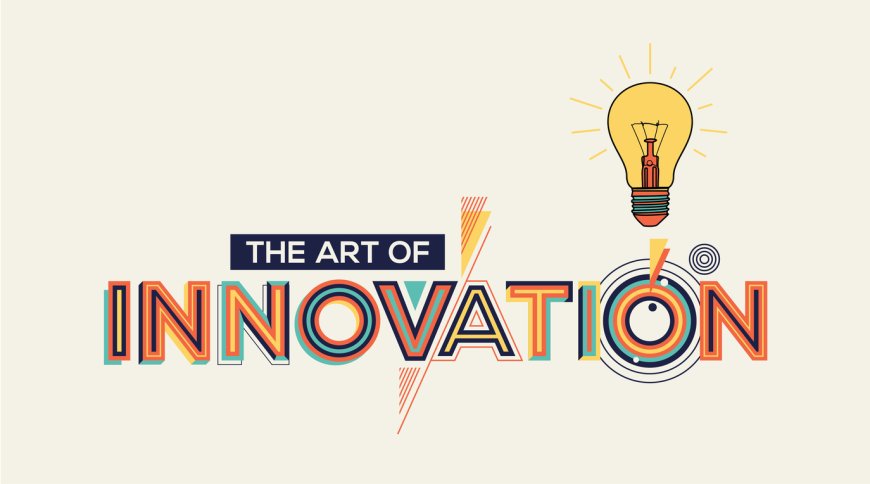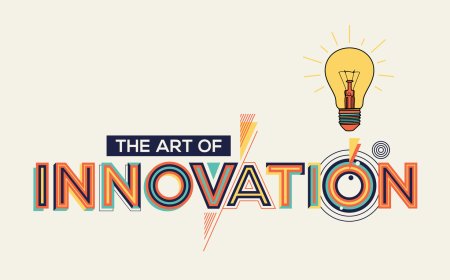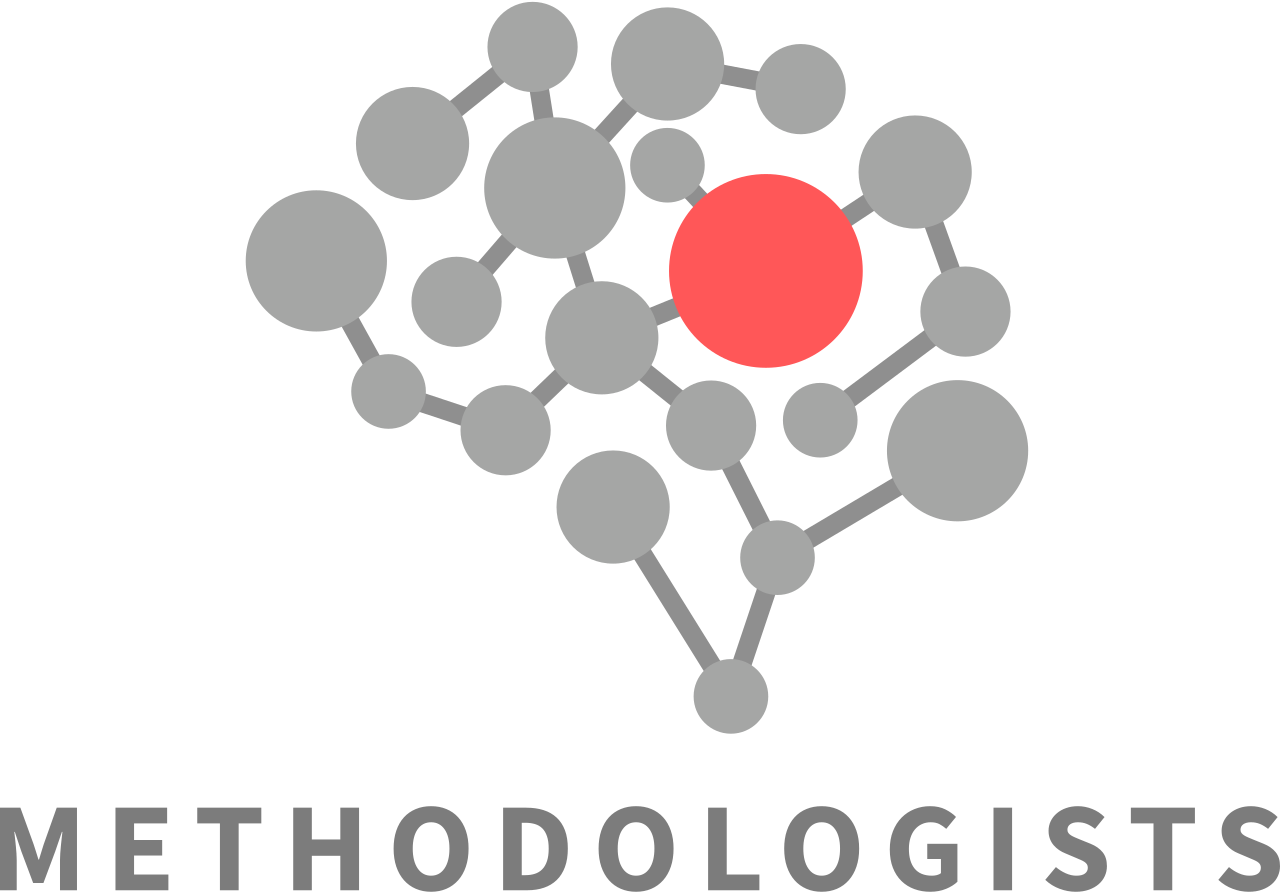The Role of Interdisciplinary Collaboration in Advancing Innovation Management
Explore the evolution and importance of innovation management, including historical context, key theories, structured processes, interdisciplinary collaboration, and future trends in sustainable innovation and technology adoption.

Innovation Management and Multidisciplinary Ventures refer to the systematic processes and frameworks that organizations implement to manage the creation, development, and commercialization of new ideas, products, and services. This field has gained prominence due to the increasing complexity of global markets and rapid technological advancements, necessitating a structured approach to foster innovation and drive sustainable growth. Notably, innovation management has evolved from focusing primarily on isolated research and development (R&D) activities to embracing interdisciplinary collaboration, which enhances creativity and problem-solving capabilities within organizations.
The significance of innovation management is underscored by its ability to provide a competitive advantage in today's fast-paced business environment. As organizations increasingly recognize the importance of integrating innovation into their corporate strategies, they are forming multidisciplinary partnerships to tackle complex challenges and leverage diverse expertise. This shift is particularly evident in sectors like pharmaceuticals and technology, where collaborations among experts from different fields have become essential for developing groundbreaking solutions and maintaining market relevance.
Despite its importance, innovation management faces various challenges, including cultural diversity, communication barriers, and the need for clarity in roles and responsibilities within teams. Additionally, the balance between risk-taking and adhering to necessary standards can pose obstacles to fostering a creative environment conducive to innovation. Addressing these challenges is critical for organizations seeking to optimize their innovation processes and achieve successful outcomes.
Controversies surrounding innovation management often arise from differing perspectives on the role of government policies and incentives in shaping innovation ecosystems. While some advocate for increased government involvement to stimulate growth, others caution against potential overreach that may stifle entrepreneurial initiatives. As organizations navigate these complexities, the need for a collaborative framework that encompasses public, private, and academic sectors becomes increasingly evident, highlighting the importance of multidisciplinarity in driving effective innovation strategies.
Historical Context
The evolution of innovation management has been significantly shaped by the increasing complexity of the business landscape, particularly as organizations confront rapid technological advancements and shifting market dynamics. This necessitated a more systematic approach to managing innovation efforts, leading to the formalization of innovation management practices across various sectors. Early conceptualizations of innovation primarily focused on isolated research and development (R&D) activities, but as industries evolved, the importance of interdisciplinary collaboration became apparent. Organizations began to recognize that the amalgamation of knowledge from diverse fields could enhance innovation outcomes and lead to sustainable growth. In the late 20th century, a shift occurred as businesses started embracing multidisciplinary partnerships to tackle intricate challenges within their industries. These collaborations were viewed as critical for fostering knowledge sharing and enhancing the absorptive capacity of firms. Research indicated that past experiences in collaboration and the ability to leverage external relationships were essential factors that influenced the success of such partnerships. Notably, the pharmaceutical industry emerged as a pioneer in adopting multidisciplinary collaborations, acknowledging that complex problems often required insights and methodologies from various disciplines. Moreover, the establishment of formal roles, such as “innovation managers,” within organizations reflected the growing recognition of innovation management as a distinct discipline. The introduction of standardized frameworks and methodologies aimed at optimizing innovation processes further underscored the field's maturation. For instance, initiatives at the international level sought to develop ISO standards for innovation management, ensuring consistency and quality across practices globally. As the 21st century progressed, the integration of innovation management into corporate strategy became imperative. Companies began to view innovation not merely as a function of R&D but as a core component embedded within their organizational culture. The rise of digital technologies and the subsequent advent of Industry 4.0 catalyzed this transformation, compelling firms to adapt rapidly to maintain their competitive edge. Today, innovation management encompasses a broad array of practices, from ideation to implementation, and is integral to navigating the complexities of modern business environments.
Theories and Models
Innovation management encompasses a variety of theories and models that guide organizations in the systematic management of innovation. This section outlines key theories and their implications for managing innovation effectively.
Innovation Theories
The Chasm and Technology Adoption
Geoffrey Moore's Chasm theory (1991) highlights the gap that exists before the majority of early adopters embrace a new technology. This framework is vital for understanding the adoption lifecycle of innovations and the hurdles that innovators face in reaching the broader market. Complementing this, Dr. Richard Foster introduced the technology S-curve (1986), which describes the growth patterns of new technologies over time, providing insights into the stages of adoption and market acceptance.
Process Innovation and Dominant Design
The Dynamic model of Product and Process Innovation, articulated by Utterback and Abernathy (1975), emphasizes the significance of process innovation alongside product development. Their work led to the Dominant Design theory, which posits that once a technology reaches a certain level of maturity, a single design often emerges as the standard within an industry.This concept was further explored in "Managing New Product and Process Development" by Clark and Wheelwright (1993), which introduced the Innovation Funnel theory, a systematic approach to managing the innovation process from idea generation to market launch.
Disruptive Innovation
The Disruptive Innovation theory, developed by Clayton Christensen and his colleagues (1995, 2015), integrates previous theories into a framework that explains how smaller companies with fewer resources can successfully challenge established businesses. This theory distinguishes between sustaining innovations, which improve existing products, and disruptive innovations, which create new markets or value networks.
Systematic Approaches to Innovation
Innovation as a System
An effective innovation management system aims to develop corporate capabilities that lead to competitive advantages through the diffusion of valuable offerings in the market. This system includes continuous design, improvement, and implementation processes and often requires an industrial and systems engineering approach to integrate interdisciplinary capabilities and tools.
Value Innovation and Strategic Frameworks
Value Innovation, introduced by Kim and Mauborgne (1997), and further elaborated in the Blue Ocean Strategy (2004), provide frameworks for creating uncontested market spaces rather than competing in saturated markets. Additionally, concepts such as "jobs-to-be-done" (JTBD) and Outcome-Driven Innovation, which stem from the work of various researchers, further assist organizations in aligning their innovation efforts with customer needs.
Innovation Management Frameworks
Structural and Cultural Aspects
Innovation management is defined as the systematic management of the creation, development, and implementation of new ideas within an organization. This process often encompasses various domains, including finance and capacity building, and is increasingly formalized within organizational structures, leading to the emergence of specialized roles such as innovation managers.
Classification of Innovations
Innovations can be classified into several categories, including radical and incremental innovations. Radical innovations disrupt existing markets or create entirely new ones, while incremental innovations refine existing products and processes without fundamentally altering market dynamics.This classification aids organizations in understanding the nature of their innovations and the appropriate strategies to deploy.
Innovation Portfolios
Models like the Innovation Matrix assist organizations in managing their innovation portfolios by categorizing initiatives based on their potential impact and market readiness. This structured approach helps organizations balance their investment in radical versus incremental innovations and align their strategies with overall business objectives.
Processes in Innovation Management
Innovation management encompasses a systematic approach to guiding organizations through various stages of innovation, ensuring that new ideas are effectively transformed into market-ready products or services. This process is crucial for fostering creativity, enhancing operational efficiency, and maintaining competitive advantage in a rapidly evolving market landscape.
Stages of the Innovation Process
The innovation management process typically involves several key stages:
1. Idea Generation
The first stage focuses on generating a diverse array of ideas. Organizations employ structured approaches such as brainstorming sessions, idea competitions, and crowdsourcing to encourage participation from employees across different departments. Engaging multiple perspectives can significantly enrich the pool of ideas, paving the way for groundbreaking innovations.
2. Idea Screening and Evaluation
Once a wide range of ideas has been generated, the next step is to screen and evaluate them systematically. This involves assessing each idea based on criteria such as feasibility, market potential, technical requirements, and alignment with organizational goals. Various methods, including SWOT analysis and scoring models, can be utilized to prioritize the most promising ideas for further development
3. Development and Prototyping
The selected ideas are then transformed into tangible products or services through a process of development and prototyping. This phase includes refining concepts and creating prototypes or minimum viable products (MVPs), allowing for testing and iteration based on user feedback. This step is essential to validate the core features of the innovation before committing significant resources.
4. Implementation
The implementation phase focuses on executing the developed idea in the market. This includes planning for marketing, sales, distribution, and addressing compliance and regulatory considerations. Successful implementation relies on effective project management and coordinated efforts across the organization to ensure a smooth transition from concept to reality. It is also crucial to foster a supportive culture that embraces innovation throughout this process.
5. Monitoring and Evaluation
Finally, continuous monitoring and evaluation are vital for assessing the innovation's performance against predefined metrics. Regular evaluations enable organizations to adapt to changing market conditions, refine their strategies, and close the feedback loop, thereby enhancing future innovation efforts.
Importance of Structured Innovation Processes
Implementing a structured innovation management process is essential for organizations aiming to stay ahead of technological advancements and market trends. A systematic approach not only promotes efficiency and optimal resource allocation but also aligns innovation efforts with broader business objectives, ultimately driving sustainable growth and competitive differentiation.
Challenges in Innovation Management
Innovation management, while crucial for fostering growth and competitiveness, presents various challenges that organizations must navigate. These challenges can stem from cultural diversity, communication barriers, and structural issues within the organization.
Cultural Diversity and Communication
Cultural diversity within innovation teams can both enrich problem-solving and create misunderstandings if not managed effectively. Different communication styles, language barriers, and cultural norms can lead to friction among team members. For innovation to thrive, it is essential to foster inclusive communication practices that ensure all team members feel heard and respected, regardless of their backgrounds. Implementing strategies such as cultural awareness training and inclusive language can help bridge these gaps and enhance collaboration.
Lack of Clarity in Roles and Responsibilities
Ambiguity in communication often results from poorly defined roles and unclear expectations, leading to confusion and errors within teams. Organizations must prioritize clarity through well-defined communication channels and clear expectations to foster an atmosphere conducive to collaboration. Ensuring that team members understand their responsibilities and how they contribute to the overall innovation strategy is vital for effective innovation management.
Organizational Structure and Interdisciplinary Collaboration
The structure of an organization can significantly impact its ability to innovate. Functional organizational structures may hinder interdisciplinary collaboration, whereas business-oriented structures can better support innovation initiatives. Establishing clear responsibilities for managing interdisciplinary collaboration and empowering employees to form interdisciplinary teams can enhance innovation outcomes. Furthermore, creating mechanisms for regular interaction between different functional areas, such as shuttle services or collaborative projects, can reduce barriers and foster innovation.
Balancing Risk and Flexibility
Innovation inherently involves risk and uncertainty. However, many organizations view risk solely as a negative aspect to be minimized, which can stifle innovative thinking. Instead, organizations should adopt a broader perspective on risk, viewing it as an inherent part of the innovation process that can lead to valuable outcomes if managed correctly. Striking a balance between maintaining flexibility and adhering to necessary standards is essential for fostering a creative environment while still meeting organizational goals.
Employee Engagement and Resistance
Engaging employees in the innovation process is critical, yet organizations often face resistance to change. This resistance can arise from fear of the unknown, a lack of clarity about the innovation process, or concerns over the implications of new initiatives. Building a culture that values and rewards innovation, alongside providing adequate support and training, can help mitigate resistance and enhance employee engagement in innovation efforts.
Case Studies
Overview of Case Studies in Innovation Management
Case studies serve as essential tools in understanding the practical applications of innovation management across diverse organizational contexts. They provide real-world insights into how businesses implement innovative strategies and adapt to evolving market conditions. By analyzing these case studies, organizations can learn valuable lessons about best practices and potential pitfalls in their innovation efforts.
Notable Examples
Global Growth Markets
The Center for Development & Entrepreneurship highlights several impactful ventures through their case studies, showcasing the application of entrepreneurial principles and innovation strategies in global growth markets. These case studies document the journeys of various companies, emphasizing their successes, challenges, and the strategies that enabled their growth.
- Aspiring Minds (India): Focused on employment services to enhance job matching.
- Bridge International Academies (Kenya): Aimed at revolutionizing education through affordable schooling solutions.
- Computer Warehouse Group (Nigeria): Specialized in information and communication technology solutions.LaGray Chemical Company (Ghana): Involved in pharmaceutical manufacturing, addressing health needs in the region.
Academic Case Studies
The Yale School of Management (SOM) has also gained significant attention for its case study methodology, receiving over 160,000 page views from various countries. This indicates a growing interest in the case study approach as a method of teaching and learning.
- Hertz Global Holdings (A): Examining the use of debt and equity.
- Coffee 2016: A case focused on the coffee industry.
- Search Fund Company Boards: Discussing how CEOs can build effective boards. These studies highlight the breadth of topics covered and the applicability of the case study method across various industries.
The Importance of Multidisciplinary Collaboration
The effectiveness of case studies often hinges on multidisciplinary collaboration, where different fields come together to tackle complex challenges. Research has shown that terminological obstacles and mismatches in language concepts can impact team dynamics and the success of collaborative efforts. By addressing these issues, teams can enhance communication and better interpret data, leading to more successful outcomes in their innovation management projects.
Tools and Techniques
Collaborative Tools for Innovation Management
Innovation management relies heavily on a variety of collaborative tools and techniques to foster effective interdisciplinary collaboration. These tools are designed to facilitate communication, streamline processes, and enhance productivity among teams working on innovative projects. For example, platforms such as Trello, Asana, and Monday.com allow teams to track project progress, assign tasks, and share updates in real time, creating a centralized hub for project information and ensuring alignment on objectives and deadlines.
Methodological Approaches
Methodological approaches play a crucial role in supporting interdisciplinary collaboration within innovation activities. These approaches are systematic procedures based on established rules, aimed at obtaining knowledge or practical results. Various methodologies have been identified, including structured brainstorming sessions, design thinking workshops, and agile project management techniques. Such frameworks encourage creativity while allowing teams to address complex challenges collaboratively.
Data-Driven Decision Making
A significant aspect of innovation management involves data-driven decision-making, which relies on robust analytics and reporting features offered by innovation management software. By monitoring key performance metrics, organizations can assess the value generated by different innovation initiatives and make informed decisions about resource allocation. This analytical approach ensures that innovation activities align with the organization's strategic goals and drive long-term growth.
Encouraging a Culture of Innovation
The success of any innovation management initiative is closely tied to the organizational culture and leadership support. Encouraging a culture of innovation requires fostering an environment where creativity and risk-taking are valued. Leadership plays a pivotal role by promoting openness to new ideas and providing the necessary resources for innovation efforts. Additionally, leveraging collaborative technologies, such as document-editing tools like Google Workspace or Microsoft Office 365, enhances real-time co-authoring and feedback, thereby strengthening collective ownership and iterative development of ideas.
Best Practices for Multidisciplinary Collaboration
To improve support for interdisciplinary collaboration in innovation activities, organizations can adopt a list of best practices. These practices, derived from the perspectives of various stakeholders, include ensuring clear communication channels, establishing defined roles and responsibilities, and fostering an inclusive environment where diverse ideas can flourish. Tailoring these practices to fit the sector, culture, and maturity of interdisciplinary collaboration within the organization can lead to more effective outcomes in innovation management.
Government Policies and Initiatives
Government policies play a crucial role in fostering innovation and supporting multidiciplinary ventures. By establishing frameworks and providing resources, governments can stimulate collaboration between various sectors, enhancing the effectiveness of innovation strategies.
Collaborative Frameworks for Innovation
A significant aspect of government involvement in innovation is the establishment of collaborative frameworks that bring together public entities, private businesses, and entrepreneurial associations. This collaborative approach enhances the development and sustainability of startups, as effective policies often rely on joint efforts among different stakeholders. The concept of "bridge-building" between central and local government emphasizes the necessity of cooperation at various levels to achieve successful outcomes in innovation. Such collaborations can lead to the creation of more robust support systems for startups, addressing their unique challenges and ensuring a favorable environment for growth and development.
Open Innovation Strategies
Open innovation strategies are increasingly being adopted by federal agencies to leverage external knowledge and skills to meet specific goals. These strategies include developing guidelines, providing necessary staff for implementation, and improving information access through dedicated platforms. Although some challenges remain regarding the adequacy of existing guidelines, the potential for open innovation to enhance governmental effectiveness in supporting innovation is significant.
Role of Government Incentives
Government incentives play a vital role in catalyzing innovation and supporting the growth of startups. By aligning their procurement processes and funding with market needs, governments can create environments conducive to natural market development. However, discrepancies in operational timelines between government entities and startups can present challenges. Therefore, effective innovation management requires that government leaders understand and navigate these complexities within the innovation ecosystem.
Federal Research and Development Initiatives
Federal research and development (R&D) funding is a critical component of government support for innovation. In FY 2021, the federal government invested $179.5 billion in R&D, reflecting a growing commitment to fostering innovation across various sectors. Initiatives that coordinate activities across multiple agencies, especially in complex areas like artificial intelligence and nanotechnology, demonstrate the government's strategic approach to addressing long-term national challenges. These multi-agency initiatives facilitate collaborative innovation efforts that are essential for maintaining competitiveness in the global economy. By creating conducive policies and fostering cooperation among diverse stakeholders, governments can effectively promote innovation management and multidiciplinary ventures, driving economic growth and enhancing societal welfare.
Future Trends
The Importance of Foresight in Innovation
Future scenarios play a crucial role in innovation by allowing organizations to visualize potential futures, anticipate changes, and identify emerging opportunities while minimizing risks. This foresight is essential for proactive innovation and maintaining a competitive edge in an ever-evolving market. However, the unpredictable nature of the future presents challenges in scenario planning, necessitating a combination of creativity, analytical thinking, and the application of artificial intelligence (AI) to enhance these processes
Sustainable Innovation
Sustainable innovation is increasingly recognized as pivotal in addressing environmental, social, and governance (ESG) issues. It encompasses the development of products and processes that not only drive business growth but also positively impact society and the planet. Aligning innovation strategies with specific sustainability goals, such as those outlined in the United Nations' 17 Sustainable Development Goals, is essential for overcoming the complexities associated with sustainable innovation. Organizations are encouraged to embed sustainability into their core innovation processes, ensuring that new initiatives contribute to their sustainability agendas.
Interdisciplinary Collaboration
The future of innovation is characterized by a growing need for interdisciplinary collaboration. This trend arises from the recognition that radical and potentially disruptive innovations have historically driven significant societal advancements. By synthesizing knowledge across different fields, organizations can create a collaborative ecosystem that fosters co-evolution and leads to groundbreaking discoveries. Such interdisciplinary approaches not only enhance the performance of innovations but also help organizations navigate the challenges posed by increased technological convergence and integrated solutions.
Embracing Emerging Technologies
Organizations must stay abreast of emerging technologies, such as AI, blockchain, the Internet of Things (IoT), and virtual/augmented reality, as these innovations present new opportunities for growth and efficiency. To effectively manage technological change, companies should establish dedicated teams to monitor tech trends, evaluate their alignment with business goals, and run pilot projects to assess the viability of new technologies. It is crucial to remember that technology should serve as an enabler of innovation rather than its sole focus, always centering customer needs in innovation initiatives
Profitability through Sustainable Innovation
Sustainable innovation does not equate to a sacrifice in profitability; rather, it can enhance it. By developing eco-friendly products, organizations can appeal to a growing environmentally conscious market while also realizing cost savings through improved processes and resource efficiencies. The ability to redefine value chains by reducing waste and emissions further underscores the dual benefits of sustainability and profitability in innovation strategies.
What's Your Reaction?












































































































